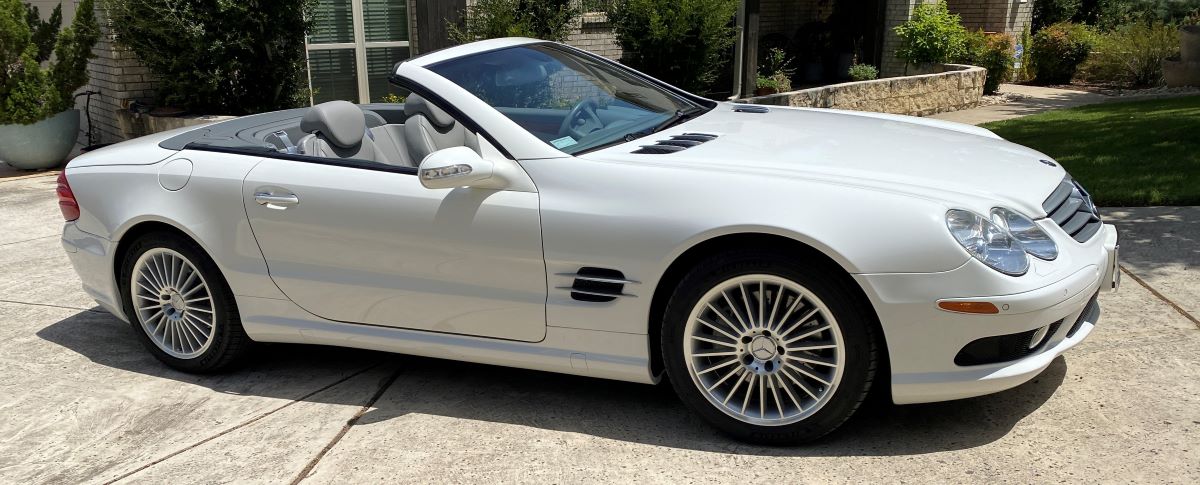I find it amusing that people have strong feelings about imported cars. Why should a vehicle’s country of origin be a factor whether it is liked or not? I get it that cars are a product of a country’s culture but, all things being equal, each brand tries to find a solution to meet the needs of a respective consumer. In the case of the four foreign convertibles below, it could be suggested they were trying to meet the needs of Americans.
Which one is best suited to your needs?

2003 Mercedes-Benz SL500
I sometimes have trouble wrapping my head around the fact that this is an SL. The same series as the legendary Gullwing, arguably the most desirable car in the world? How did a two-ton roadster end up being a half-ton heavier than the ancestor that set the world on fire? Nonetheless, modern SLs are solid, over-engineered retractable hardtops that are great on highways.

I sometimes have trouble wrapping my head around the fact that it’s been more than 20 years since Mercedes came out with the four-eyed look like on this 25,706-mile 2003 SL500. With a V8 burble and 302 horsepower on tap, there’s more than enough to handle joining traffic on the onramp. Plus, the Ash Gray interior is an interesting contrast to the white hue — a nice change from generic black.

1967 Austin-Healey 3000 Mark III
Truth be told, the little two-seaters of the post-war era have never moved me, but I have never driven one so I have not had the opportunity to change my mind. I reckon this Austin-Healey’s six makes it more interesting than the four-cylinder that was in plenty of Brit and Italian sports cars but, aside of a vintage Alfra Romeo Giulia (or even a Swallow Doretti), the style has never pulled me in.

Yet here we have a final-year 3000 Mark III in the hands of the original owner. That’s something that truly piques my interest — what’s better than owning something that’s been in someone’s hands for decades? “Nothing hairy or violent about it. Simply smooth and seemingly endless power,” said the ads of the time. Now I am truly curious.

1998 BMW Z3 Roadster
Though this is German, flag-wavers can rejoice in knowing that the Z3 was built in South Carolina. Produced with both inline-four and -six engines, transmissions were either a five-speed manual or a four- or five-speed automatic, depending on the engine. Plus, James Bond drove one in GoldenEye, one of the few non-Brit cars the agent has ever driven.

This 131,594 1998 Z3 roadster features a 138-horsepower 1.9 engine backed by a four-speed automatic, which sounds almost quaint for a Bimmer, but it’s been 25 years already. The instrument panel is a lesson in ergonomics and simplicity — who said German cars had to be complicated? Features include power four-wheel discs with ABS, six-disc CD changer, heated seats, and air condition, all things for contemporary living.

1985 Porsche 911 Carrera Cabriolet
Ever compare a modern 911 to a classic air-cooled example? The new ones are huge! And though they aren’t weighing two tons like some contemporary sport(y) cars, late-model 911s do weigh a lot more than the 1985 example that we have here. Sure, it may be slower, but wouldn’t it be nice to sample the automotive purity of the 911 the way Ferry intended?

This cabriolet is painted Guards Red with a five-speed manual, so what else do you need? Enjoy the sun while trying to test the limits of oversteering (though the reputation is with earlier variants). Plus, this 911 is tastefully presented without none of the ostentatious candy that seems to afflict later cabriolets (and their owners).





